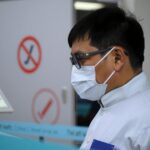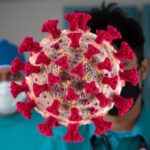Analyzing the HMPV Outbreak in China: Implications and Responses
China is witnessing a surge in human metapneumovirus (HMPV) cases, alongside other respiratory illnesses. The outbreak primarily affects children and the elderly, with symptoms similar to influenza. Experts suggest that increased cases result from changes in social dynamics after Covid-19 lockdowns. The Chinese government has begun monitoring respiratory illnesses to enhance preparedness, contrasting their initial Covid-19 response.
Five years post the onset of the Covid-19 pandemic, China is facing a rise in cases of human metapneumovirus (HMPV). Reports indicate a rapid spread of the virus, with claims of hospitals and crematoria being overwhelmed. Social media showcases crowded healthcare facilities, and users assert that multiple respiratory viruses, including influenza A and Covid-19, are circulating simultaneously.
Despite the alarming increase in respiratory illnesses, neither the Government of China nor the World Health Organization (WHO) has issued an official warning or declared an emergency. The surge primarily impacts children and the elderly, particularly vulnerable groups such as young children with immature immune systems and older adults with pre-existing conditions. Symptoms, which mimic those of flu or cold, include fever, cough, and a runny nose, occasionally leading to severe complications such as bronchitis or pneumonia.
Experts suggest that this uptick in respiratory illnesses is attributed to colder weather and the resumption of regular activities post-Covid-19. Previous stringent lockdowns had significantly limited exposure to respiratory pathogens, resulting in a population, especially children, that is encountering such viruses for the first time in the context of a “catch-up” period.
To mitigate this rise in cases, Chinese health authorities have initiated proactive measures, including a pilot monitoring system for pneumonia of unknown origin. This new initiative aims to enhance readiness against respiratory infections during the winter months, a notable shift from the country’s inadequate preparedness during the initial Covid-19 outbreak. Official reports indicate an increase in respiratory infections during mid-December.
Authorities expect a further increase in respiratory illnesses throughout the winter and spring but anticipate that total cases this year will be lower than in 2024. There have been increased instances of HMPV, particularly affecting children under 14 years of age in northern provinces.
HMPV is a viral infection responsible for symptoms similar to common colds, often causing upper respiratory infections but occasionally leading to severe conditions like pneumonia or exacerbation of chronic conditions like asthma. It is predominantly contracted by children under five. Symptoms of an HMPV infection may include cough, fever, runny nose, and wheezing.
The virus is transmitted through direct contact with infected individuals and contaminated surfaces, primarily via coughing, sneezing, and physical contact. Currently, no antiviral treatment exists for HMPV; patients are advised to manage symptoms at home unless severe complications necessitate hospitalization for oxygen therapy or IV fluids to maintain hydration.
Human metapneumovirus (HMPV) is an important respiratory pathogen primarily affecting children and vulnerable elderly populations. It is known to lead to illnesses that manifest similarly to the cold or flu. The current attention on HMPV in China arises amidst widespread concerns regarding respiratory illnesses in tandem with the recent history of the Covid-19 pandemic, which saw significant public health challenges and a key concern for healthcare systems worldwide. The circumstances surrounding the detection of HMPV underscore the importance of disease monitoring and preparedness, particularly in the context of respiratory disease spikes as seasonal changes occur. Understanding the nature of HMPV and the broader implications of concurrent respiratory infections is crucial for public health strategies moving forward, particularly in light of China’s previous struggles with disease containment and healthcare resource allocation during pandemics.
In summary, the outbreak of HMPV in China symbolizes the ongoing challenges faced in managing respiratory illnesses. While the government and health authorities are beginning to implement monitoring and response measures, the context is complicated by a recent history of public health crises. As respiratory infections rise, particularly among vulnerable groups, sustained vigilance, education regarding transmission, and effective health system responses will be paramount in addressing this public health concern.
Original Source: www.business-standard.com








Post Comment